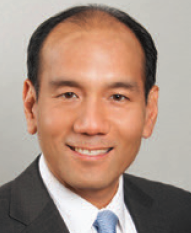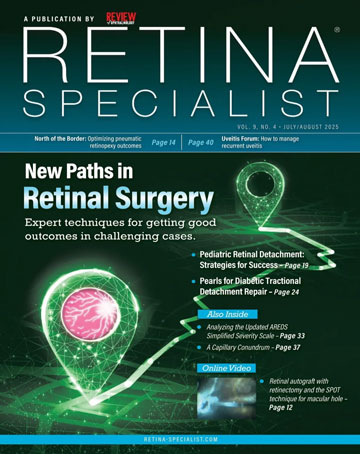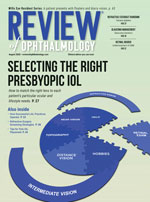Once every three years, vitreoretinal surgeons from around the world gather in Colorado for the Vail
Vitrectomy meeting, which just occurred in February.
It’s a meeting with a storied history, initiated by Robert Machemer, MD, the “father of modern retinal surgery” in 1975 as a think tank to speed up advances in vitreoretinal surgery. An international committee oversees the meeting, and it’s kept relatively small for good reason. Everyone who’s invited is required to give a talk related to a novel surgical innovation that has not yet been presented or published. These presentations are kept short, allowing ample time for discussion.
I still recall Tamer Mahmoud, MD, PhD, first presenting the concept of autologous retinal transplantation here.1 Many in the audience were astounded that he even attempted this, let alone the anatomical outcomes with what appeared, on optical coherence tomography, to be reconstitution of the ellipsoid zone within the graft and hints at visual recovery rather than tissue necrosis.
Since then, it has been interesting to see the evolution of the technique, much of which came out of the discussion and side conversations during and after that meeting.
It was also at Vail Vitrectomy where our colleague, Edwin Ryan Jr., MD, approached a group of us with the concept of creating an in-depth surgical database of retinal detachment repairs performed across multiple institutions. This was the genesis of the Primary Retinal Detachment Outcomes study group that led to many publications and highlighted several important surgical elements, especially the use of scleral buckling alone or in combination with vitrectomy and the association with better outcomes.2,3
This year was no different, with several topics that I expect will evolve into meaningful innovations in our field. I was particularly impressed by the exciting developments in robotics and artificial intelligence for retinal surgery, which, interestingly, brings up questions of whether we will one day be made obsolete as these technologies advance.
Another innovation for rapid secondary intraocular lens implantation when there’s no capsular support will likely be a game changer as well, assuming that there are no safety issues.
Above everything else that this meeting has taught me, it’s the fact that there are many bright minds who are constantly thinking of new ideas to improve vitreoretinal surgery and outcomes for our patients. It’s encouraging to know that our field is ever evolving. Meetings like this provide inspiration for all of us to continue to innovate. RS
 |
References
1. Grewal DS, Mahmoud TH. Autologous neurosensory retinal free flap for closure of refractory myopic macular holes. JAMA Ophthalmol. 2016;134:229-230.
2. Joseph DP, Ryan EH, Ryan CM, et al. Primary Retinal Detachment Outcomes Study: Pseudophakic retinal detachment outcomes: Primary Retinal Detachment Outcomes Study Report Number 3. Ophthalmology. 2020;127:1507-1514.
3. Ryan EH, Ryan CM, Forbes NJ, et al. Primary Retinal Detachment Outcomes Study Report Number 2: Phakic retinal detachment outcomes. Ophthalmology. 2020;127:1077-1085.




